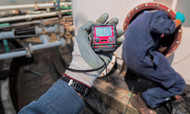How Often Should You Calibrate Your Gas Monitor?
Posted by William Kimmell on 13th Feb 2023
Every day, workers across a variety of industries use gas detectors to protect themselves from toxic fumes and combustion. In order to keep these workers safe, gas detectors require calibration as part of regular maintenance. But how often should you calibrate your gas monitor? The answer isn’t straightforward.
Differing Guidelines
Different entities will give you different answers if you ask how often you should calibrate your gas detectors. That’s because there are different types of sensors and more than one kind of calibration technique. For example, if you ask OSHA, they’ll say you should calibrate your devices every time you plan to use them. However, the manufacturer might only recommend calibrating once every three to six months.
Types of Sensors
There are two common types of sensors on the market today: nondispersive infrared (NDIR) and electrochemical. NDIR sensors use infrared light to detect gas particles, while electrochemical ones use electrolyte barriers. NDIR manufacturers usually claim their devices don’t need calibrating as often as electrochemical sensors, but that’s not necessarily in agreement with OSHA.
Calibration Grades
A full calibration of a multi-gas sensor takes just a few minutes and $5 to $10 worth of calibration gas. If you only have one sensor to test, the process is pretty painless. But what happens when you have hundreds of monitors at your facility? Do you really have to test each one every day before starting work?
Bump Testing
Bump testing is a faster way to check the calibration of your gas detector. What this process does is show whether your device is still working properly or if it needs a full calibration. Many companies use bump testing to prolong the period of time between full calibrations.
The Bottom Line: How Often Should You Calibrate?
You should always calibrate a gas detector after it’s been damaged. Outside of that situation, you’re probably okay following the manufacturer’s guidelines. However, if you can test your devices more frequently, you should.
OSHA is currently working with other worker protection agencies to standardize the calibration rules in order to eliminate confusion. Keep an eye out for future updates on this topic.
You can find stationary and portable gas detectors at TG Technical Services—we carry single, double, and multi-gas detectors. Let us know if you’re having trouble finding the right gas monitor for your line of work; we’d be happy to help.

